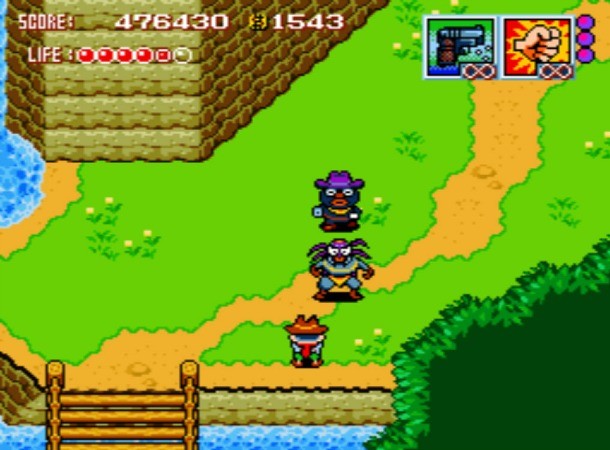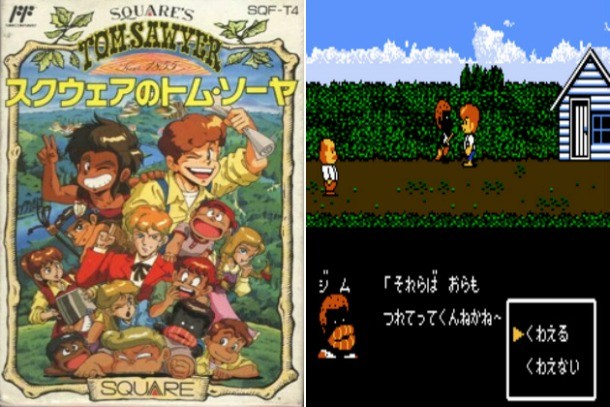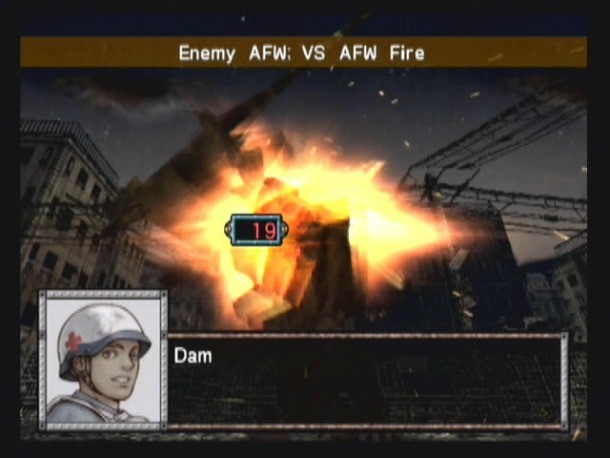Our extra-large special edition is here. Subscribe today and receive the 25% longer issue at no extra cost!
Six Wild Japanese Games Set In Other Cultures
 A page from the manual of Ganbare Gorby!
A page from the manual of Ganbare Gorby!
Japanese developers often have a knack of incorporating their own creative ideas into idiosyncratic settings and stories. Perhaps they want to have space sheriffs in the American west. Perhaps they want to put the U.S. president in a mech suit. Some developers might shy away from such ideas. But these six developers – they went for it. They took a swing at working other cultures into their games with a creative abandon rarely seen these days. While these might have not been the most commercially successful games, they are each fascinating in their own way.
1. Ganbare Gorby!

Released outside of Japan as “Factory Panic” with no connection to the former Soviet statesman, Ganbare Gorby! was released in Japan for the Sega Game Gear in 1991, published by Sega. As a Japanese speaker, I can let you know that the word “ganbare” in Japanese is a phrase of encouragement, so roughly the title translates to “Go Gorby!” or “Come on, you can do it former leader of the Soviet Union Mikhail Gorbachev!”
In Ganbare Gorby! Mikhail Gorbachev must hit switches inside a factory to move conveyor belts of food to starving people. While doing this, he must incapacitate guards who are trying to stop him (because apparently they hate anyone getting food). For such a political backdrop, only the Japanese could make a Soviet factory look fairly cute and innocuous.
Released less than two months before the Soviet Union officially dissolved in late 1991, Ganbare Gorby! can either be seen as the Japanese trivializing the gravity of communism ending, or it can be seen as the Japanese developers praising Gorbachev as a humanist leader who is helping his people.
2. Ganpuru: Gunman’s Proof

Ganpuru: Gunman’s Proof has an outstanding premise and story. Developed by ASCII and released in 1997 for the Super Famicom, the game is set in the American West circa 1880. In the intro, two meteorites crash on “Strange Island,” an island surrounded by water off the coast of the American West. Since the meteorites hit, there have been strange creatures roaming the island, attacking people and leaving behind in writing the word “Demiseed.” Mysterious, right?
Your character, a young farm boy, is strolling around outside of his hometown of Bronco Village when a UFO crash lands in front of him. Two entities named Zero and Goro emerge, who tell the boy they are space sheriffs trying to track down a fugitive named Demi, whom they believe is hiding on earth. The boy is so interested that he lends his body to be inhabited by Zero to try to hunt down Demi, since the aliens cannot survive in the Earth’s atmosphere for long. You play as Zero inside the farm boy’s body for the rest of the game.
The game itself is very reminiscent of The Legend of Zelda: A Link to the Past, so much so that it has a similar world map. But unlike the Legend of Zelda, you have guns, and not just old-fashioned guns from 1880, but machine guns, bazookas, and flamethrowers. Guns can fired in eight directions, and you can even strafe with the left and right triggers, which will let Zero move while his aim is locked to a given direction.

Apart from the guns, the gameplay is ripped out of the Zelda format, which isn’t necessarily a bad thing. You progress through dungeons which reward and unlock new power-ups and weapons that allow you to access to the next dungeon. After a dungeon, carrots appear in the world; using this vegetable will summon another Space Sheriff, Mono, and his mule named Robaton, which you can ride around on for a little while. Between space sheriffs, bazookas, and blatantly yet charmingly ripping off one of the greatest Zelda games of all time, it has now become my life’s goal to play Ganpuru: Gunman’s Proof.
Ganpuru: Gunman’s proof has very tangential relation to the Wild West, really. If I were to speculate why it’s set in the old west, I would say the developers clearly have a love of the setting, and were also enamored with the idea of a poor farm hand becoming a hero. It may have also simply been a good way to put guns into a Zelda-esque game, and I can’t fault them for that.
3. Square’s Tom Sawyer

Your eyes are not deceiving you, this is indeed an RPG about The Adventures of Tom Sawyer made by the people that brought you Final Fantasy. Released only in Japan for the Famicom (or the NES as we know it) in 1989, Square’s Tom Sawyer takes place in 1855 on the Mississippi River, and features most of the main characters of the original book by Mark Twain. Combat is standard RPG fare where each party member (be it Tom, Jim, Huck or whoever) has their own stats for health, power, and speed, which increase as party members gain experience. There is no weapon equipment as all characters fight with their fists, but there is a large item inventory.
The game was scored by famous video game composer Nobuo Uematsu, and the lead designer, Hiroyuki Ito, would later work on the active time battle system for Final Fantasy IV. Square’s Tom Sawyer seems like a standard light RPG. It might have been forgotten in time if not for having one of the most painfully egregious caricatures of an African American in the history of video games, as seen in the screen above. It’s easy to see why this game never made it stateside.
The game offers a fascinating glimpse at one development studio's interpretation of American historical literature. While not totally true to the source material, the game does center on Tom looking for buried treasure, which is part of the book. Apart from one glaring racially insensitive aspect, Square’s Tom Sawyer does a competent job representing the book’s vision of 1855. Sure, there are odd video game tropes like key cards and black magic, but this is an RPG after all, so it’s hard to fault them.
Square’s Tom Sawyer offered Japanese gamers a glimpse into Square’s vision of 19th century America. It also represents a different time in game history, in which major publishers could and would make video games about anything they wanted, even when those concepts crossed the line into blatant insensitivity.
Up next: The Cold War comes to Japan, police fire machine guns off of hover bikes, and the president fights the vice president in outer space.

4. Ring of Red – Let’s get away from troubling real history and into troubling fake history. Released in 2002 by Konami, Ring of Red is a strategy game for the PS2 that poses an alternate timeline of what would have happened if the U.S. had not dropped atomic bombs on Japan during WWII. Under this alternate history scenario, the game purports that America still captured Japan in a costly battle known as “Operation Downfall.” Reeling from their defeat, Japan ceded their northernmost island to the Soviet Union. Thus North Japan aligned with communism and South Japan aligned with democracy, not unlike North Korea and South Korea.
In this universe, North Japan invaded South Japan in 1950, and a war broke out much like the Korean War. But, since this is a video game, this time there are mechs. The development of Armored Fighting Walkers became crucial to combat.
In terms of gameplay, Ring of Red is a turn-based strategy game not unlike Advance Wars. However, once two sides engage, there is a separate combat mode where players control their AFWs on a battlefield in real time, along with giving orders to nearby infantry.
While still set in Japan, Ring of Red offers an amusing alternate history about of the world's Cold War. I admire its creative, original premise for a war game.
5. L.A. Machine Guns

A light-gun shooter developed by Sega for arcades in 1999 and ported to the Wii in 2010, L.A. Machine Guns answers the question of what the police will be like in the future. They will be on hoverbikes shooting recklessly in the direction of any terrorist group, especially if they’re trying to kidnap the president. Most likely inspired by countless 80’s action movies, L.A. Machine Guns has a real cheesy but fun vibe. Each level takes place in a different American landmark, from downtown L.A. to the Las Vegas strip to Yosemite National Park.
In terms of its interpretation of American culture, perhaps L.A. machine guns might be a commentary on the military industrial complex gone out of control, destroying its own property in order to stop terrorism. Or, more likely, Sega just wanted to make a goofy light-gun game and liked America as a setting. Only the developers know for sure.
6. Metal Wolf Chaos

We end the show with a showstopper. I’m glad it exists and I’m sure you will be too. Metal Wolf Chaos was developed by From Software and released in Japan exclusively on the Xbox in 2004. It revolves around the president of the United States entering a suit of powered armor called Metal Wolf and trying to bring back freedom to America.
By the end of the first quarter of the 21st century, America is a fragmented nation where rebels have taken over government institutions in all major cities through a military coup. Vice President Richard Hawk shifts the military forces’ loyalty to him and tries to usurp President Michael Wilson. However, Wilson breaks out of the windows of the White House in a mech suit, fights his way across the lawn and into an underground bunker, whereby he escapes via Air Force One that takes off through the Lincoln Memorial reflective pool.
Wilson flies to the west coast, where he decides to be a one-man wrecking crew and liberate all of America in his armored suit, starting in San Francisco and heading east. Like L.A. Machine guns, every mission centers on a major American location, except there are even more levels in Metal Wolf Chaos. President Michael Wilson fights to liberate The Grand Canyon, Miami Beach, Houston, New York City, and a few more. These missions are fought as a third-person shooter, where the player can control Wilson in his suit and his ludicrous array of guns and missiles.

Finally, Wilson makes his way back east to Washington D.C. to face Hawk, who has now fully fortified the White House. Wilson battles his way in, but Richard Hawk is not there. Wilson finds out Hawk is in Las Vegas and goes there to face off with him. However, Richard Hawk escapes in a rocket into space! He flies to a space station with his best soldiers, and Wilson follows Hawk and fights him in space to prevent the nuclear destruction of America. I am not making any of this up. I don’t have the capacity for such an amazing imagination.
Tragically, Metal Wolf Chaos never released in America, even though it has full English voice acting. It has become a collector’s item, and currently fetches a price of around $125 on eBay. Perhaps with the success of Dark Souls and Dark Souls II, we can lobby From Software for a HD re-release.
Will you seek out any games in this list? Have you played any oddball Japanese games I missed about western culture or world culture at large? If you were to come up with a game set in another culture, what would it be like? Tell us in the comments below.

Get the Game Informer Print Edition!
Explore your favorite games in premium print format, delivered to your door.
- 10 issues per year
- Only $4.80 per issue
- Full digital magazine archive access
- Since 1991









